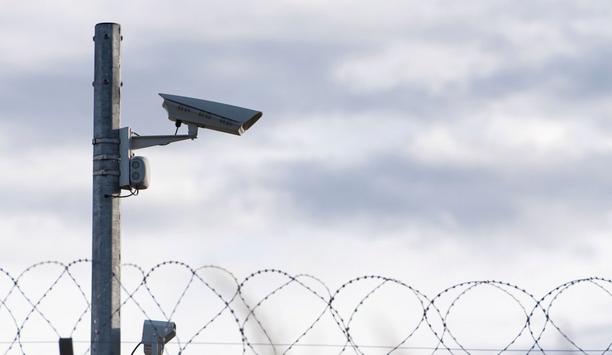Even before considering the extreme nature of its sub-arctic climate, Fairbanks International Airport is unique in many ways. While serving a local population of only 82,000, the airport offers non-stop passenger service to Europe, Asia and Canada, making Fairbanks the smallest U.S. market to offer this level of international air service. In the words of Mike Supkis, Police and Fire Chief of the airport, “We are a little airport with a lot of really big planes.” The extensive international traffic, combined with a relatively small facility and staff, delivers daily security challenges that require solutions as unique as the airport itself.
One of the first things Chief Supkis proudly mentions when he talks about the airport’s new terminal-wide security system is that it is the fruition of an unusual, jointly funded partnership between airport security and two federal agencies, the TSA (Transportation Security Agency) and the U.S. Customs and Border Protection. “All three organisations had a need for improved security. Together, we were able to agree on a system that serves all of our individual needs while saving a great deal of money by avoiding redundant equipment and operations.” The Fairbanks offices of SimplexGrinnell laid out a system that combines ViconNet video management capabilities with an access control system from Software House to create a fully integrated, IP-based solution that spans the entire airport, inside and out.
The system connects approximately 120 cameras and access control points to a network that may be viewed and controlled from four different monitoring locations, each with different levels of network access based upon respective areas of authority. TSA workers are only able to view cameras trained on the passenger and baggage screening areas. U.S Customs and Border Patrol workers monitor cameras that view international gates, incoming passengers, passenger hold areas, baggage screening, immigration and agricultural inspection stations. The 911 Dispatch Center at the airport has access to all cameras system-wide, with priority access over other stations to control and view any cameras as needed. Law enforcement is also able to view all cameras and, upon an alert from the Dispatch Center, is able to call up video corresponding to an event prior to responding with support personnel.
Chief Supkis describes the new system as a “force multiplier,” allowing his limited staff to monitor more areas, more efficiently and effectively. For example, within the Dispatch Center, the staff views as many as 40 cameras at one time, displayed across many monitors using a ViconNet Virtual Matrix Controller. The PC interface allows video of interest to be quickly dragged from one viewing monitor to another, including to a central viewing area with two extra large monitors. Chief Supkis refers to these monitors as his “windows on the world.” The beauty of the system, he explains, is the automated way in which any breach of an access point triggers the immediate display of corresponding video on these main monitors, so that security personnel can quickly assess and respond to the situation. For example, if someone forces open a door to a secure area, video of that door will immediately pop up on the main monitors and must be acknowledged by the system operators. Wayne Halvarson, Project Manager with SimplexGrinnell, worked on automating this process through the use of ViconNet’s built-in alarm capabilities.| ViconNet system allows the airport's limited staff to monitor more areas, more efficiently and effectively |
Video analytics are also employed as a means to increase monitoring and operating efficiency. Because of the limited size of the terminal’s physical structure, passengers traverse the same corridors, stairways, escalator and elevator bays whether they are moving from non-secure to secure areas or in the opposite direction. With the help of SimplexGrinnell, the airport was able to make use of ViconNet’s sophisticated video analytics software, programming it to identify specific individuals walking in the “wrong” direction. This use of technology has been extremely effective. Prior to its installation, if a passenger managed to slip from a non-secure area to a secure area without first passing through a security checkpoint, it would have been necessary to evacuate the entire secure area and require all passengers to endure another round of screening. However, with the new video intelligence in place, recorded video allows specific individuals to be quickly identified when they bypass security and only they need to be apprehended.
Of course, no discussion of the airport’s challenges would be complete without recognizing those imposed by the weather. In winter, Fairbanks temperatures periodically dip to -60 degrees Fahrenheit and the sun appears for only four hours each day. With the exception of a half dozen cameras that remain from the previous CCTV system, SimplexGrinnell recommended that Vicon’s SurveyorVFT camera domes be used for the entire installation. SimplexGrinnell’s Peter Fine installed pressurised SurveyorVFT domes in all outdoor locations and a combination of PTZ and fixed SurveyorVFT day/night cameras throughout the terminal. “I’ve used the pressurised nitrogen domes from Vicon on other outdoor projects, including the nearby U.S. airbase. Based on my experience, they work very well in this type of application.” The airport uses two 35X domes on the tarmac, with the remaining cameras providing 22x or 23x zoom.
SurveyorVFT cameras are available in IP versions but the airport currently uses analog models that connect to eight Kollector hybrid NVR/DVRs. The Kollector units serve as DVRs that convert the video to digital ViconNet format and record it, but they also provide full network connectivity, creating a unified system that performs like an NVR-based system. The ViconNet software interface is configured so that any combination of cameras may be grouped together and viewed regardless of where they are physically connected on the network. Extensive storage is provided by the eight Kollector units, allowing video to be saved for 30 days, with critical incidents stored for 90 days or more.
Chief Supkis talks enthusiastically about the success of the installation. “Since we’ve installed the system, TSA violations through unsecured doors have gone to zero. Our use of video analytics for backflow prevention is really an incredible use of technology. And I’m especially proud that we were able to do all this through cooperative funding between the state and federal government. This is an example of where being frugal and budget-minded resulted in a solution that’s far better than what any one entity could have envisioned on its own.”












